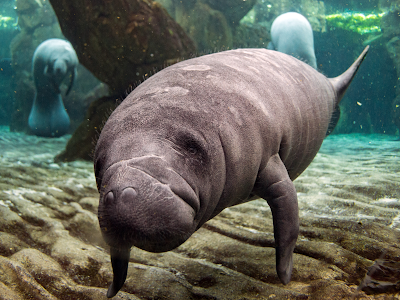One hundred and seventy million years ago, Madagascar was landlocked in the middle of the supercontinent Gondwana. It was sandwiched between land that would eventually become South America and Africa and land that would eventually become India, Australia, and Antarctica. Rather like puzzle pieces, these bits of continent came together and then were slowly pulled apart.
Riding the movements of the Earth's crust, Madagascar, along with India, first split away from Africa and South America. The plates continued to shift and Madagascar split next from Australia and then Antarctica before and started heading north. While this was all happening at what may seem a snail's pace of two to four inches each year, the cumulative movement changed the shape of our world.
Around this same time, India smashed into Asia — forming the Himalayas in the process. Madagascar finally broke away from India and was marooned in the Indian Ocean. Beautiful and solo — Madagascar has been on its own for the past 88 million years.
With Madagascar being solo for so long, many of her species only exist — or briefly existed — here. One of the most interesting of these is the Elephant birds. They are members of the extinct ratite family Aepyornithidae, made up of enormous flightless birds that once lived on the island of Madagascar. A ratite is any of a diverse group of flightless and mostly large and long-legged birds of the infraclass Palaeognathae.
Elephant birds became extinct, around 1000–1200 CE, as a result of human hunting. Elephant birds comprised the genera Mullerornis, Vorombe and Aepyornis. While they were in close geographical proximity to the ostrich, their closest living relatives are the much smaller nocturnal Kiwi — found only in New Zealand — suggesting that ratites did not diversify by vicariance during the breakup of Gondwana but instead evolved from ancestors that dispersed more recently by flying.
Elephant birds were endemic to Madagascar. Phylogenetic, genetic, and fossil evidence all suggest that the elephant bird, along with the ostrich, arrived in Madagascar and India when these landmasses were still connected to Australia and Antarctica via a land bridge.
When India and Madagascar split, the elephant bird wound up surviving on Madagascar, while the ostrich was carried north with India and was eventually introduced to Eurasia when India collided with the continent.
The presence of the elephant bird on Madagascar can be chalked up to vicariance; it was living on Madagascar land already when Madagascar broke off from India. Most of the species on Madagascar today seem to be descended from individuals that dispersed from Africa long after Madagascar was established as a separate island.
Very rarely, but occasionally, we find fossil eggs from Elephant Birds are found The National Geographic Society in Washington holds a specimen of an Aepyornis egg which was given to Luis Marden in 1967. The specimen is intact and contains the skeleton of the unhatched bird. The Denver Museum of Nature and Science (Denver, Colorado) holds two intact eggs, one of which is currently on display.
Another giant Aepyornis egg is on display at the Harvard Museum of Natural History in Cambridge, MA and a complete, unbroken egg, is held at Leeds Discovery Centre, Leeds, UK. A cast of the egg is preserved at the Grant Museum of Zoology at London University. There is also a complete specimen in the collections of the Kuleli Military High School Museum, Istanbul, Turkey.
David Attenborough, an esteemed naturalist and my personal hero, owned an almost complete eggshell, dating from 600 to 700 CE, which he pieced together from fragments that were given to him while making his 1961 BBC series Zoo Quest to Madagascar. In March 2011, the BBC broadcast the 60-minute documentary Attenborough and the Giant Egg, presented by Attenborough, about his personal scientific quest to discover the secrets of the elephant bird and its egg.
Photo: Griffon, Gyps fulvus. The griffon vulture is a large Old World vulture in the bird of prey family Accipitridae.
Photo: Aepyornis skeleton. Quaternary of Madagascar by Monnier, 1913 by Monnier - http://digimorph.org/specimens/Aepyornis_maximus/Aepyornis.phtml digimorph.org, Public Domain, https://commons.wikimedia.org/w/index.php?curid=79655
Cooper, A., Lalueza-Fox, C., Anderson, S., Rambaut, A., Austin, J., and Ward, R. (2001). Complete mitochondrial genome sequences of two extinct moas clarify ratite evolution. Nature 409:704-707.
Goodman, S. M., and Benstead, J. P. (2005). Updated estimates of biotic diversity and endemism for Madagascar. Oryx 39(1):73-77.
Evolution Berkeley: https://evolution.berkeley.edu/evolibrary/news/091001_madagascar
Vences, M., Wollenberg, K. C., Vieites, D. R., and Lees, D. C. (2009). Madagascar as a model region of species diversification. Trends in Ecology and Evolution 24(8):456-465.

































